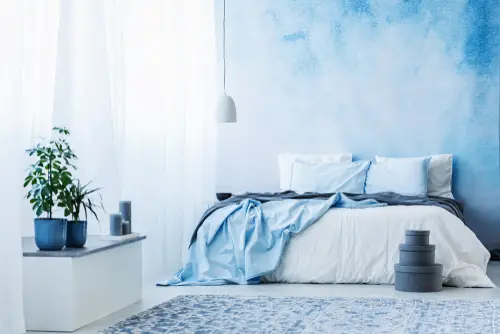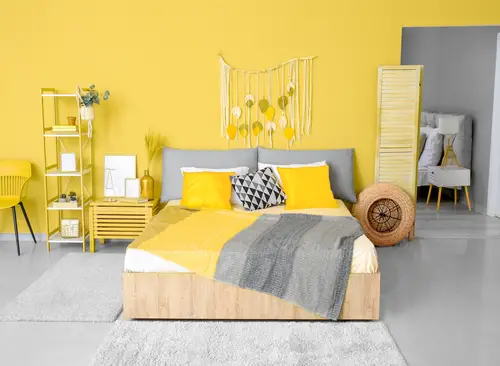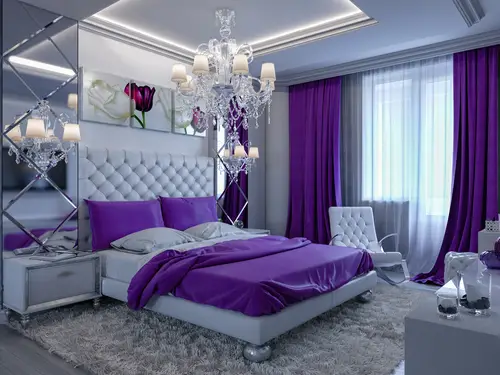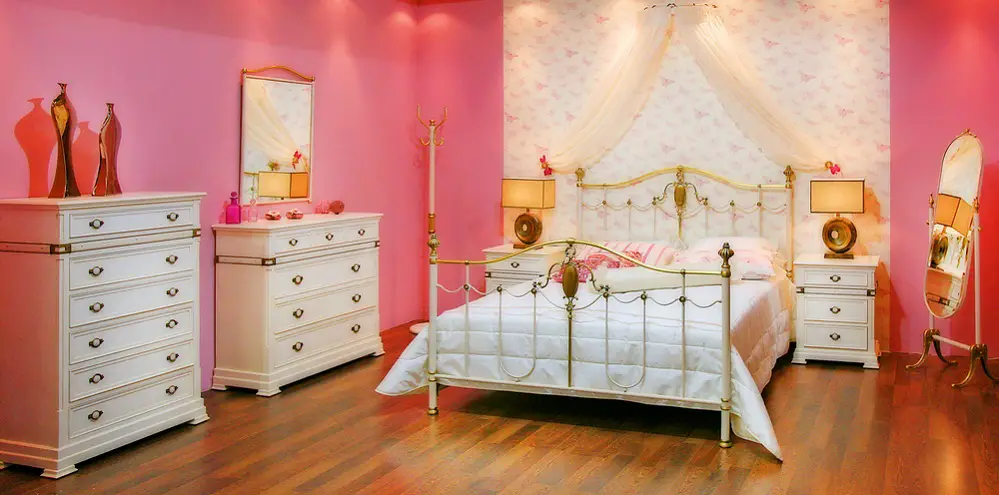There's a reason smiley faces are bright, bright yellow, and angry faces burning red. Color has a strong effect on the mood, and our disposition then influences our ability to maneuver.
When we're stressed, stressed, or upset, it is more difficult to fall asleep. But when we feel calm and relaxed, sleep feels like a smart next step.
Here are the most suitable colors to paint your bedroom for you in the mood for sleep.
Blue: The Ideal Bedroom Shade for Sleep

Hands down, the ideal bedroom shade for sleep is blue. Blue is a calming color, and serene is conducive to sleep. Above that, your brain is exceptionally responsive to the color blue because of special receptors on your retinas known as ganglion cells.
These are sensitive to blue over any other color, so when they see it, they send a message to your mind that you are in a serene environment, lowering your heart rate and blood pressure.
According to a Travelodge poll of 2,000 Britons, those who have blue bedrooms have an average of 7 hours and 52 minutes of sleep every night.
That is far more than many Americans, considering the CDC discovered a third of American adults get fewer than 7 hours of sleep regularly. Painting their bedroom blue might be a step towards lesser sleepless nights.
Another advantage of a blue bedroom? Almost 60 percent of those blue bedroom owners at the Travelodge poll also reported waking up feeling happy regularly.
Other Excellent Bedroom Colors for Sleep

Not everyone loves blue, and that is fine. Loads of different colors encourage a restful night's sleep:
Yellow: With 7 hours and 40 minutes of sleep per night, survey participants with yellowish bedrooms came in at a close second for time spent sleeping each night.
Green: Green bedroom owners appreciated 7 hours and 36 minutes of sleep every night. They also showed a greater tendency to wake up feeling positive and optimistic.
Silver: for people who prefer something somewhat less vibrant, silver offers an alternative. Survey participants with silver bedrooms got 7 hours and 33 minutes of shuteye each night.
Orange: Orange is a warm, relaxing shade that some think helps with indigestion. Orange bedroom owners appreciated 7 hours and 28 minutes of sleep typically.
The Worst Colors for Sleep

Are there any colors you must avoid painting your room walls? According to the Travelodge poll, the answer is yes.
People with grey, brown, or purple bedrooms regularly slept at unhealthy levels of over 7 hours of sleep each night.
Purple: With a sleep duration of 5 hours and 56 minutes, purple is the most unfavorable color for sleep. It is a mutually stimulating color, boosting your imagination and contributing to more vivid nightmares.
Gray: Even though it is not daring like purple, gray makes the record for its depressing and uninspiring ability. Survey participants with grey bedrooms only slept 6 hours and 12 minutes each night.
Brown: Like grey, brown is gloomy, drab, and anything but cozy. It leads to create a feeling of restlessness rather than calm.
Red: Red is a vibrant, energetic color that may improve your blood pressure and inspire you to move faster. Neither of them is physical sensations that encourage sleep.
What Else Should You Keep in Mind When Painting Your Bedroom for Sleep?
Whatever color you pick, use the pastel, lighter, or muted colors of this color. Neutral, ground or skin-based hues are calming and encourage positive energy flow based on Feng Shui.
A color that is too bold or bright will excite you, developing a feeling of alertness instead of relaxation. Save the statement walls to your living room and keep your bedroom calm.
Use Flat paint rather than an eggshell or shiny finish. Glossy finishes reflect light, while flatter pigments absorb more color and feel softer.
Also, take care of what colors you select for your bedroom accents. They should create harmony with each other and be parallel to one another on a color wheel instead of contrasting. Contrasting colors excite your eyes and head.
When you've got the bedroom color picked out, it is time to appeal to your other senses. Please find out the best scents, sounds, light, and much more to your bedroom in our guide to make your bedroom the best environment for sleep.
Affiliate Disclosure
Affiliate Disclosure: I may earn a small commission (at no cost to you) if you purchase a mattress after clicking a referral link or using a coupon code on this site. That said, all content and opinions on this site are my own and are NOT affected by these payments.
This site participates in the Amazon Services LLC Associates Program, an affiliate advertising program designed to provide a means for sites to earn advertising fees by advertising and linking to Amazon.com.
*Amazon and the Amazon logo are trademarks of Amazon.com, Inc, or its affiliates.

